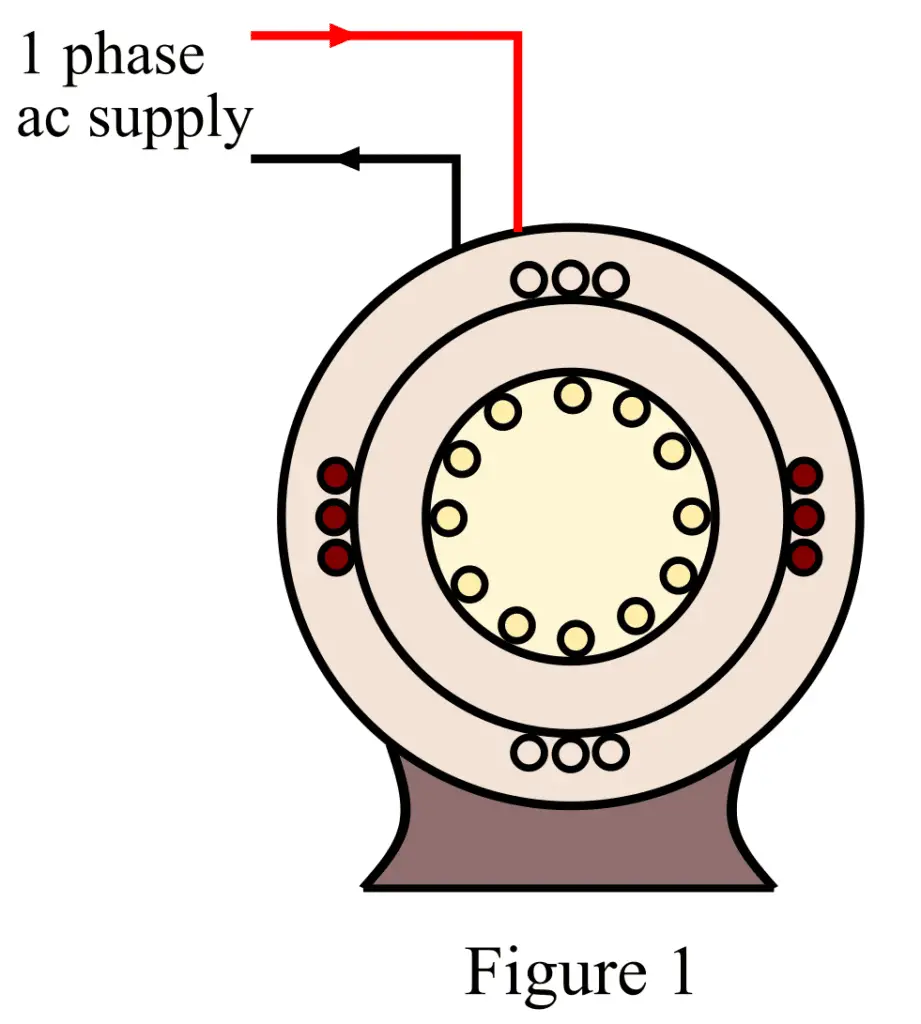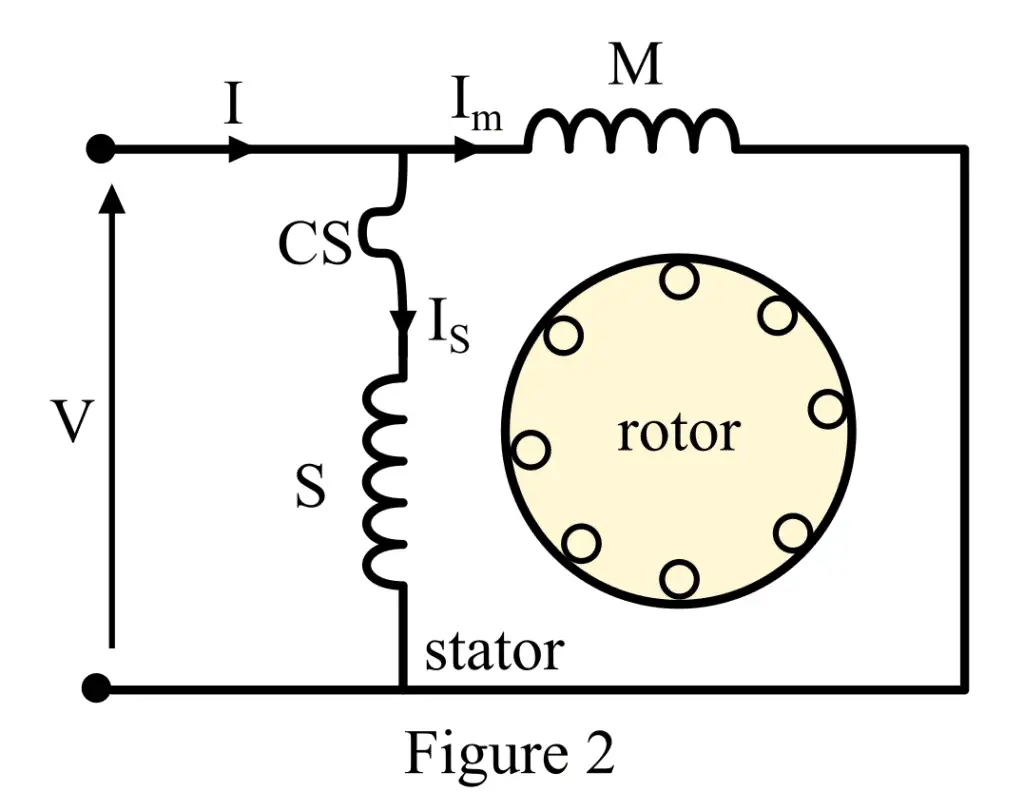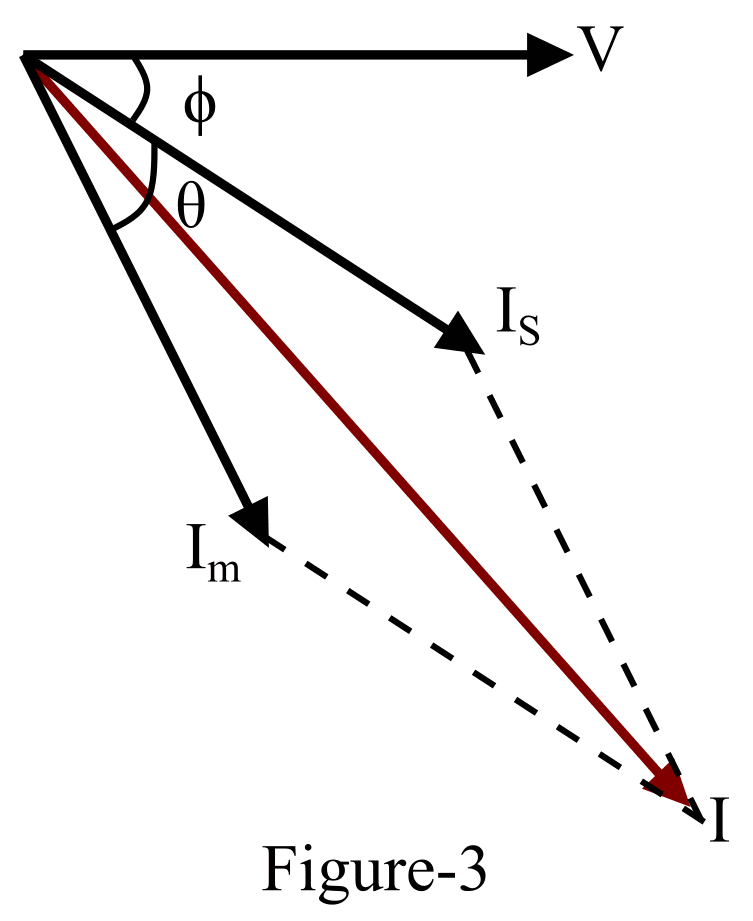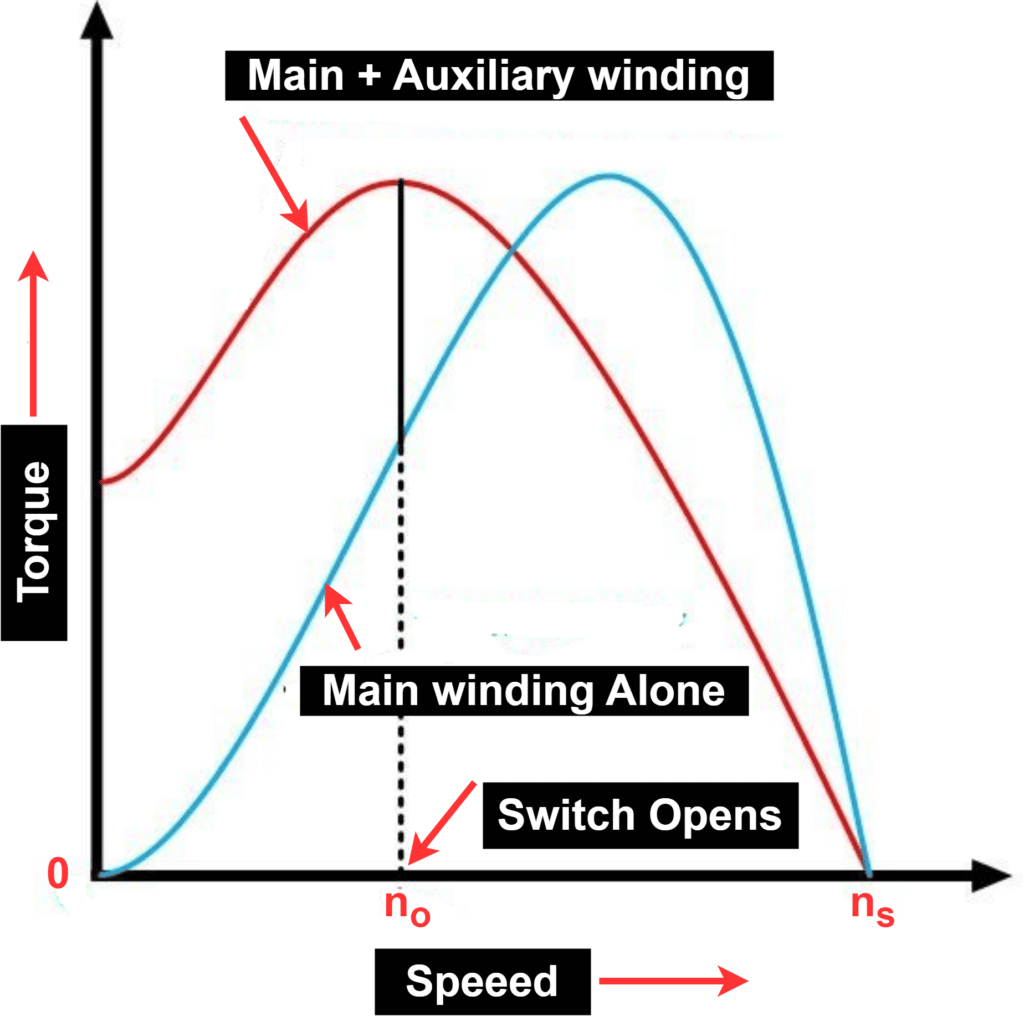In this article, we will discuss the split-phase induction motor, its construction, equivalent electrical circuit, operation, characteristics, and applications. So let us start with a basic introduction to the split-phase induction motor.
Split Phase Induction Motor: Definition and Construction
The split-phase induction motor is a type of single-phase ac motor. The construction of the typical split-phase induction motor is shown in the figure-1 below.

In the split-phase induction motor, there are two windings are provided on the stator namely, stating winding (designated by S) and main winding (designated by M). The starting winding is energized only during starting period of the motor and it is isolated from the motor circuit when the motor attained a significant speed.
From the construction diagram, we can see that the two windings, i.e. starting winding and main winding are designed to have the following characteristics.
- Starting winding has high resistance and small reactance.
- The main winding has small resistance and high reactance.
By making the two winding have these characteristics, the currents flowing in the two windings will have a significant phase difference of about 25° to 30°.ϕ
Split Phase Induction Motor Electrical Circuit
The electrical equivalent circuit of the split phase induction motor is shown in figure-2.

It has two coils representing the two windings (starting winding and main winding) of the motor. As mentioned in the above section, the motor’s starting winding operates only for a small period when the motor starts up, and then it is isolated. To isolate the starting winding from the circuit, a centrifugal switch (CS) is used. The starting winding carries starting current (IS) and the main winding carries the main winding current (Im).
Now, let us understand the operation of the split-phase induction motor.
Operation of Split Phase Induction Motor
The working of the split-phase induction motor is described as follows:
Firstly, the stator windings of the split-phase induction motor are connected to the single-phase ac supply. So that the starting winding carries a starting current (IS) and the main winding carries the current Im. As mentioned earlier, the starting winding is highly resistive, and the main winding is highly inductive. These resistive and inductive effects create a significant phase difference between the currents IS and Im. Due to this phase shift, a weak, but revolving magnetic field is produced in the motor which approximates the 2-phase phenomenon, and starts the motor.
The torque produced by the motor at the start is given by,

Where θ is the phase shift between the currents IS and Im, and K is a constant.
When the motor attains a speed approximately equal to 75% of its normal speed, the starting winding of the motor is removed from the circuit by opening the centrifugal switch.
After that, the motor will work as a single-phase induction motor and continuously accelerates to attain the normal rated speed.
Phasor Diagram of Split-Phase Induction Motor
The phasor diagram of the split phase induction motor is shown in figure-3.

From this phasor diagram, it can be seen that the starting winding current leads the main winding current by an angle θ which shows that the starting winding is more resistive as compared to main winding. The resultant of these two currents gives the total current drawn by the motor from the single-phase ac supply source. Also, the total current will lag the supply voltage by an angle φ. This angle provides information about the power factor of the motor.
Characteristics of Split-Phase Induction Motor

The following are the important characteristics that a split phase induction motor has:
- Split-phase induction motor develops a starting torque which nearly equal to 1.5 times of full-load torque.
- Split phase induction motor has a maximum torque (or pull-out torque) is equal to about 2.5 times its full-load torque.
- The starting current drawn by the split phase induction motor is almost 7 to 8 times of its full-load current.
- Split-phase induction motors have a starting winding made of fine wire that will heat up quickly. So, this type of motor is used in applications where starting period is less than about 5 seconds.
- The direction of the split-phase induction motor can be changed by reversing the line connection of either the main winding or the starting winding.
Applications of Split-Phase Induction Motor
The split phase induction motors are used in applications where starting period is small and requires moderately high starting torque. Some common applications of split phase induction motors are listed below:
- Used in washing machines.
- Motors are used in food mixers.
- Used in blowers.
- Small drill machines.
- Lathe machines.
- Split phase induction motors are used in office equipment.
- They are used for dairy machinery.
- Used to run fans of air-conditioners, etc.
Hence, this is all about introduction, construction, electrical circuit, working, phasor diagram, and applications of split-phase induction motor.